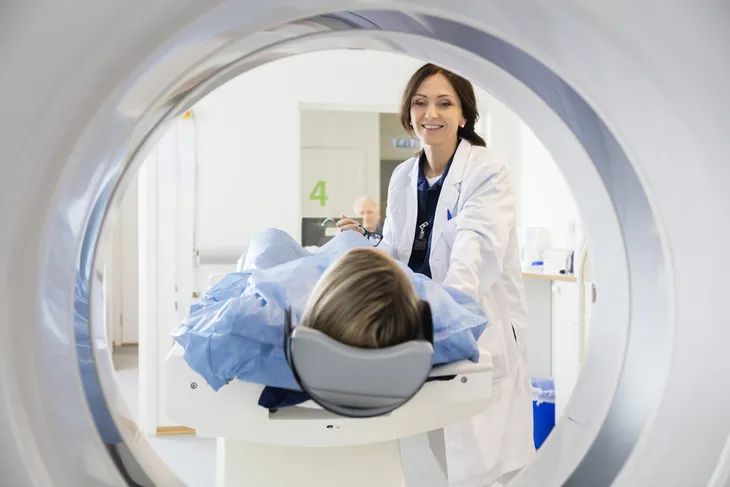- Myositis is a pervasive disease that can systematically break down the most important muscles of the body over time and leave a person far from independent.
- Symptoms of this condition generally involve muscle weakness in some of the largest muscle groups in the body, like the shoulders, neck, back, and hips, and often gets worse over the proceeding weeks and months.
- A doctor may recommend medication to alleviate the symptoms, however, lifestyle adjustments may be necessary too.
Difficult to diagnose and treat, a myositis diagnosis and its ensuing symptoms can seriously uproot everything. Fatigue, weakness, and irritating rashes are just the beginning of a disease that sees a lot of people losing their independence.
As with a lot of medical conditions, the key to living with and managing the symptoms of myositis is catching it early and treating it immediately. But you can’t spot what you don’t understand. So, in the spirit of early detection, we’re going to take a closer look at myositis so that you know precisely what to watch for.
What Is Myositis?
Inflammation is a perfectly normal function of the human body. When initiated correctly, it helps your body fight off infections and protect you from potentially harmful bacteria and viruses. But unfortunately for your joints, your body can sometimes trigger its inflammation response seemingly all on its own.
When a medical professional uses the word myositis, what they’re talking about is any condition that causes inflammation in the muscles. These bouts of inflammation can last a short time or a long time depending on the condition.
Myositis can be caused by just about any condition that precedes inflammation but is better understood by looking at its five types. Before we get there though, let’s look at the condition’s most prominent symptoms.
General Symptoms
As mentioned above, there exist different classifications of myositis with each presenting its own variety of symptoms. But there are commonalities across most myositis types.
Symptoms of this condition generally involve muscle weakness. It happens in some of the largest muscle groups in the body, like the shoulders, neck, back, and hips, and often gets worse over the proceeding weeks and months.
Other symptoms may or may not include fatigue, difficulty swallowing, trouble breathing, a rash, as well as the thickening of the skin on the hands.
Polymyositis
Polymyositis is one such classification of this debilitating condition. This myositis tends to initially affect the muscles on both sides of the body before inevitably expanding to other areas.
The disease begins as simple muscle irritation, but it can eventually cause them to break down and become weak. Though there is no known cause, polymyositis rarely occurs in people 18 and younger, and primarily impacts those between the ages of 31 and 60.
Dermatomyositis
Along with the typical myositis muscle weakness, dermatomyositis often presents surface-level skin symptoms. A red or purple rash may appear on areas that are regularly exposed to the skin. This rash can be either painful or itchy.
Other symptoms include red or purple swelling of the upper eyelids, red or purple spots on the knuckles, elbows, knees, and toes, as well as joint stiffness. While it can occur at any age, it most often affects adults ages 50 to 70-years old. Also, women are twice as likely as men to develop it.
Inclusion Body Myositis
More common in older adults, particularly men over the age of 50, inclusion body myositis (IBM) is associated with progressive weakness in the muscles of the hands, forearms, thighs, and lower legs. As the muscles begin to waste away you may begin to develop telling symptoms such as frequent tripping and falls, knees giving way, loss of ability to walk, or difficulty raising the front of your foot.
Unfortunately, there is no known treatment for this troubling disease. However, a combination of physical and occupational therapy may help ease symptoms.
Juvenile Myositis
It’s said that juvenile myositis affects close to 5,000 children in the United States. The disease is consistent with a lot of the symptoms we’ve already touched on with the exception of the risk group.
This myositis type targets children between the ages of 5 and 15 with generalized fatigue, red or purple rashes, hardened lumps, or sheets of calcium under the skin. Difficulty getting out of a chair, and trouble swallowing are also common.
Toxic Myositis
Toxic myositis symptoms are consistent with what we’ve established thus far. Muscle weakness, rashes, fatigue, and trouble breathing are all possible. The difference with this type though is its underlying cause.
This type of myositis is thought to occur as an unforeseen and incredibly rare side effect of some types of medications or illicit drugs. The good news is, patients typically improve rapidly once they stop taking the offending medication. That said, in some cases, “patients who start out with a toxic myopathy may develop prolonged symptoms,” explains the Johns Hopkins Myositis Center.
Causes of Myositis
Myositis researchers are still trying to work through all the potential causes for each variation of the disease. As you’d expect with a condition with no precisely known cause. The researchers do have their suspicions though.
Viral infections are the most common cause of myositis, though inflammatory conditions can sometimes cause long-term symptoms too. Some medications have been shown to lead to muscle weakness. Myositis can also come as the result of an injury, or from a medical condition that causes the breakdown of the muscles called rhabdomyolysis.
 H_Ko / Shutterstock
H_Ko / ShutterstockDiagnosis and Testing
As clear-cut as the symptoms of myositis seem it can be difficult to diagnose. That’s due in large part to the rarity of the condition. Fatigue and muscle weakness are also common symptoms of a variety of other conditions too.
Thankfully medical professionals have a range of tests at their disposal, including physical examination, muscle biopsy, electromyography, magnetic resonance imaging (MRI), blood tests, genetic tests, nerve conduction studies, and more.
Treatment: Medicine
There aren’t any drugs specifically designed to treat myositis. That being said, there are a variety of medications doctors prescribe to help ease its troubling symptoms.
For example, corticosteroids are frequently used to suppress the immune system as a means of slowing down its attack on healthy tissue as well as reducing inflammation, and treating skin rash symptoms. Doctors also often recommend over-the-counter non-steroidal anti-inflammatory drugs (NSAIDs) to reduce and manage the symptoms as well.
Treatment: Lifestyle Changes
Medications may help alleviate myositis symptoms, but using them while also making some lifestyle adjustments may help too. A diligent rest, nutrition, physical therapy, and exercise plan is a patient’s best chance at staving off the disease’s long-term implications.
Getting enough rest is critical. Patients are recommended to adopt an anti-inflammatory-based diet too. Myositis sufferers should also ask their doctor about integrating exercise into their overall treatment plan.
The Takeaway
Reading about unfamiliar medical conditions can cause most of our palms to start feeling a little clammy. But learning about how your body interacts with the potential threats around it really is the only way to protect yourself from whatever life may throw at you. After all, you can’t seek professional help for something that you don’t even know about.
Myositis is a pervasive disease that can systematically break down the most important muscles of the body over time and leave a person far from independent. If you suspect your symptoms are consistent with one of the types we detailed above, it’s critical that you seek medical attention and treatment as soon as you possibly can.














